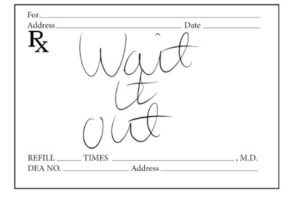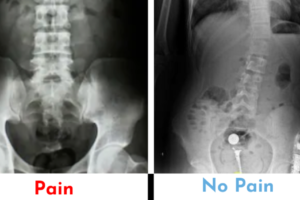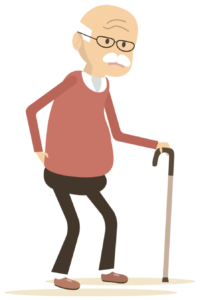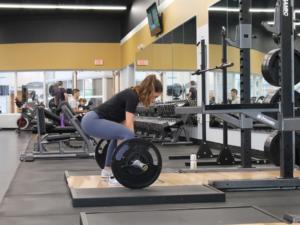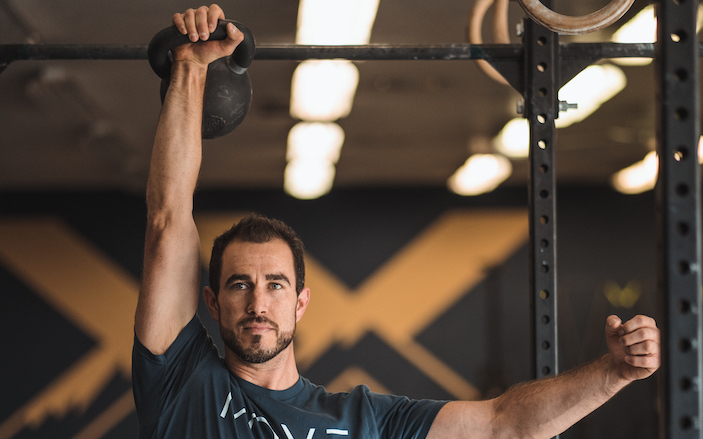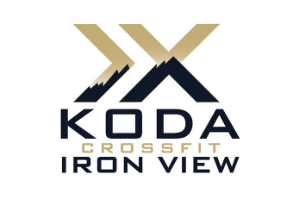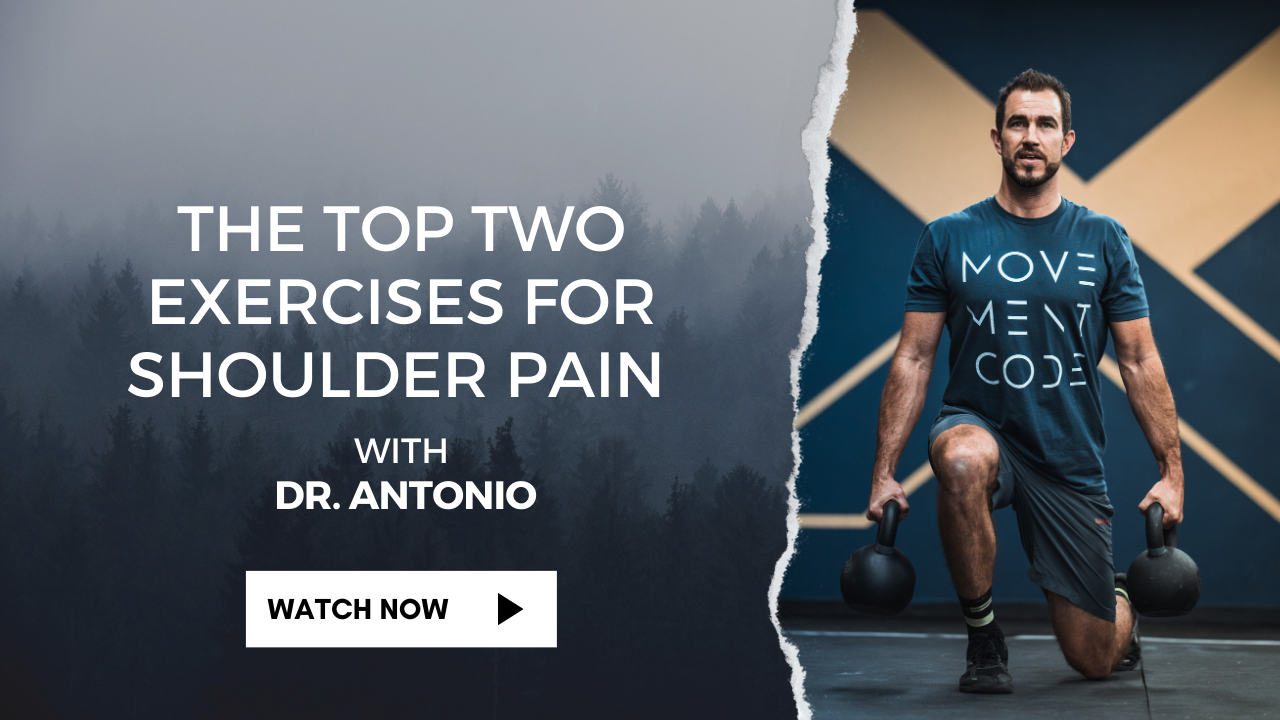The Ultimate Guide To Stopping Low Back Pain
In less than 20 minutes you will learn the in and outs of lower back pain while Sherlocking your way to determining myth vs truths on the best ways on how to stop back pain.
Why?
Well, you are here probably because you have had back pain or someone you know has and this obviously interests you enough otherwise you would not be here. So grab a cup of coffee or beer (depending on what time of day it is, no judgment) and let’s dig in.
The Ultimate Guide To Stopping Low Back Pain
As stated in the 2018 Lancet Journal publication series on the epidemic of lower back pain, nearly 80% of individuals will have some sort of lower back pain in their lives and it is estimated that roughly 30-40% of individuals have some form of lower back pain right now.
In short, it seems to be important and it seems that many people are dealing with it.
So in conjunction with the conclusions from the Lancet as well as many other resources we have boiled this complex issue down as best as we can to try and help you and your loved ones overcome what sometimes feels like an overwhelming issue.
We hope that if anything you can gather one piece of valuable information that will teach and highlight something about your body that you did not know before, so that you can stop your back pain.
This is so important for me to share with you because I was where you are, and the cookie-cutter approach did nothing for me until I took all of the information from many different resources and started putting the pieces together for what my body needed. Of course everyone had their own take on how to stop back pain, and their way was better than the rest. Now this is usually best managed with a professional such as a great chiropractor or physical therapist (that I will again argue does not do a cookie-cutter approach unfortunately with how well people market this day will lie about what they do, so reach out if you need a referral!)
The journey on how to stop back pain will always begin by determining when did the pain started? Keep in mind while this provides us with a good amount of information, the issue may have started in the past when you did not have pain and we are simply just seeing it surface now that is why a proper history and examination is needed [just taking X-rays is not an examination].
If you have ever been to any sort of provider in the past this is the first question they will typically start with.
Asking when the pain began along with how will give you a great deal of information as to what might be going on and how serious your pain might be.
When discussion how to stop back pain we must remember that less than 1% of lower back cases are related to some sort of serious pathological issues such as cancer, tumor, and infections, etc…
This is important to know because all too often many of us jump to worst-case scenarios because our back really hurts and we figure we must be dying. Be rest assured it can heal and you will too.
So what does this leave us with then…
Well if it started a long time ago and it came out of know where we can dive in and find out what it triggering it and get you to move a littler differently and have great results. We can also have great results if it just started not that long ago and you know that you might have picked up a weight wrong or your child. All of this sets the groundwork for teasing out what are the true underlying causes of the pain you are experiencing.
One analogy that I always use when discussing this with my patients and clients is: if there is no trauma that occurred when your pain began there is most likely a reason as to why it started and we can figure out what that is to help with the current pain you are having and more importantly allows us to prevent or reduce the chances of it happening again in the future.
Diving in deeper for future conversations we will go over the pain model and how different psycho-social factors will also play into how we perceive pain. Ultimately we must appreciate that we having a discussion on how to stop back pain, it is wise for us to understand the full picture. It is not as simple as just saying your back is our of “alignment” or your pelvis is “torqued”.
What is the current management strategy for the majority of back pain?
Wait it out, and if you want to be a little proactive about it:
- Rest
- Ice
- Pain medication
- Stretches
- Surgical consultation
When having these discussions with our patient about how to stop back pain we cannot argue that time will help! But most of us, especially those that are here reading this want more and want to return back to their sports, fitness, or active lifestyle so we have to be a little more progressive in our thinking and approach. (Let me clear the air by saying all of the above bullet points will also work, and they might work for you, but it is better to determine who and why rather than a blanket approach for all!)
Below we will review the 10 myths and 6 truths about back pain and how you can successfully recover, feel stronger, and teach you how to stop back pain.
The 10 Myths About Back Pain
- Rest is best; sit back and wait
- Your back is weak
- You need X-ray or MRI to fix pain
- You will have back pain the rest of your life
- Core strengthening is overrated
- Your parents had back pain you’re doomed
- How you move has nothing to do with pain
- How you sit does not affect your pain
- You won’t be able to play or pick up your kids or grandkids
- You will always have to do your back exercises
The 6 Truths About Back Pain
- Your back is strong
- Movement will help
- Sex can still be enjoyable
- Let your body heal and it will
- Audit your lifestyle and what is important
- Deadlifts are good for you back
We are going recap on Myths and Truths and What to do Next. Many of you will be encouraged to jump ahead to what to do next part and I completely understand why. But hang on with us and read through the whole article, because I guarantee the you will discover something that will be the missing link for you based on what you might have been told before in the past so that you can finally take control of what has been robbing you of so many things in your life. The missing links will help you de-code what you should be doing in the future to eliminate pain, get stronger, and move better!
Continue on To The Ultimate Guide To Stopping Low Back Pain
10 Myths on How To Stop Back Pain
1. Rest is Best; Sit Back and Wait
Yes, sometimes rest can be beneficial for your back pain. But we need to redefine rest… Typically when practitioners are telling you to rest they mean, and or it is understood by the patient, to simply wait and do nothing and things will run its course and things will get better. So individuals will stop what they are doing which typically leads to sitting around on a couch doing nothing and waiting.
This is the opposite of what we want to be doing!
We want to move! Your body wants you to move!
Now, what we need to understand though is it matters how we move. With everything, we insert in context. The context might be the single most valuable piece of information to determine how your recovery process will be.
What your feeling and how you’re experiencing your pain and discomfort might be completely different than someone else, and I am here to tell you now that everyone has a “high pain tolerance”. We are not downplaying by any means what you are experiencing and certainly not dismissing how bad your pain might be. Your pain is your pain and what you are experiencing is real to you so we meet you where you are at, and any great practitioner should be doing the same with you.
Back to sitting and waiting… We have had individuals basically crawling into our office because there pain is so bad and others who are fine but in certain positions or contexts their pain is excruciating. Meeting you where you are at, we need to determine the best movement context or code for you.
For some this might be standing in one place and shifting your hips forward and back, for others it might be laying on your belly and propping yourself up on your forearms, we might suggest you got for a brief walk or perform bodyweight air squat, and for other we might simply say keep training or working out just reduce your load.
One of the more important reasons we also encourage movement and reduction of sedentary positions in the increased inactivity of certain muscle groups as a result of pain as seen commonly in the glute complexes and lumbar paraspinals. These same muscle groups are commonly seen to be dormant in sitting postures or positions. These same muscle groups are vital for stabilizing and controlling the lumbar spine and lower back. So, in essence, the more we sit we are encouraging more complacency in these muscle groups instead of encouraging more activation which is ultimately what movement with encourage.
Determine the hardest thing you can do reasonably well and with limited pain and do it over and over again. This is how we wait! We wait by encouraging the body to move yet respect the protective mechanisms that it is going through.
In doing so you will find that your pain will diminish quickly and you will be able to move around staying active in your life, work, and be proactive with your health.
“A body in motion stays in motion, and a body in rest stays at rest” -Einstein
2. Your Back is Weak
Your body is strong! Do not let anyone tell you otherwise.
Could we be stronger, maybe, but don’t assume that because your back is hurting that it is because your back is weak and fragile. If you could actually see how much force and generated and controlled with your lower back you would actually be amazed. So let’s squash that here and now!
More importantly, we must understand more about the context of your pain and how, when, and where did you start to feel the discomfort.
Many times the activities or movements we are performing might be above our capacity or threshold so we start to develop some pain or discomfort but that does not mean it is weak, it simply means we are doing too much for it and or we need to create more resiliency!
A weak back or a weak core is often to blame for the symptoms we are experiencing, which is confusing when we are prescribed strengthening exercises. But recall that our body adapts and the adaptation come from stress being put upon the body.
Stress or load > capacity or tolerance may result in injury or pain
But if your capacity/strength/tolerance > than the stress imposed upon your body, then you get stronger.
By simply redefining what we mean by weakness, strength, capacity, and load you can gather a better appreciation for what your body can actually do and be motivated to make it the best damn back you have ever had. I mean you pretty much owe it to yourself to do so, and what is great is that it will thank you by feeling great and performing at the top of its game whenever called upon.
I cannot think of a better relationship than that if you ask me
Trust in it and it will reward you!
3. You need an X-ray or MRI to learn how to stop back pain
One of the most over-prescribed medical interventions in today’s society is medical imaging. It is believed the be the gold standard for treatment because we can see what is going on in the inside of the body and the tissue structures associated with the pain we may be experiencing.
While the breakthrough of medical imaging has been revolutionary for modern medicine and something to this day that our clinic and progressive colleagues will still prescribe, it is being overused and used more as a fear-based tool than educational component.
This is especially true for the case of lower back pain!
Let us paint a picture of a specific example of how this plays out…
An individual in their 50s present to an orthopedic office (and we have seen this exact same scenario played out at chiropractic office, urgent care, or ER settings, and Primary Practice) with acute lower back pain that is intense and debilitating making it hard for them to walk or more. While they have reported some lower back tightness in the past from working as a landscaper they have never reported really any pain in their lower back, despite all the years of hard work. Now recall that the pain just start and they have not had pain before… They get an x-ray to determine what might be causing the pain they are experiencing at the office. The provider evaluates the images and sees boney changes that one would not normally see on a “healthy spine” (I cannot make the air quotes any bigger, although I wish I could because there is no such thing as a “healthy spine”!). Because of the osteoarthritis, they see on the plain film X-rays the provider determines this much be the cause of their pain.
Now even those that are not providers when I ask them can agree that these boney changes cannot happen overnight but yet their pain pretty much started overnight. So if they have had the boney changes prior to and after the pain they are experiencing (remember it will get better) then we can pretty much assume that the boney changes are not causing the pain because they are always there and have been there.
Here is a perfect example of how medical imaging was used as the first line of treatment rather than a proper evaluation and questionnaire to determine what is actually triggering the pain and why it began in the first place.
This same story is played out for MRIs as well.
The patient-centered approach has clearly determined that conservative treatment methods and active care protocols should be used first and if conservative care options have failed then perhaps medical imaging should be considered (I would encourage a second opinion in your conservative care as well before exploring imaging if you have not been seeing your results)
Now it must be said that imaging can still be valuable and we will use that information in the whole process of gathering data to best determine the appropriate path for you, it cannot be the stand-alone piece of evidence that would suggest the best route for you.
4. You will have back pain for the rest of your life
How sad and frustrating does this sound?
If this was your first episode of lower back pain and you were just told this, you might be having a number of different thoughts rolling through your head right now. And we can see how the psychological side of pain can come into play.
Who do we commonly hear this from?
- Practitioners
- Family Members
What if instead, we change the narrative slightly…
Can you stay with me for just a minute because this can be very powerful for you or another family member/friend?
How we approach this in the office:
“You know what, Miss Jones? Back pain is fairly common and there are obviously various forms of back pain and underlying causes to your pain. The likely hood that the pain is caused by something serious is well under 1%. This means that although we have pain right now, you will get to the other side, and with our guidance and direction you will have a better understanding of what might have caused the pain, how you can be in control of your pain, and ultimately how you can manage any potential flare-ups that might happen in the future. Now I don’t know about you but when I know I have a little more control in my life, my stress levels go down, my pain goes down, the likelihood of me getting into more sports and activities go up, because I know what to do and how to do it, and you know what if you have some questions or you need a little more TLC you can come right back here and we will help you along the way! If we can make you a little stronger and a little better than before, do you think that might help your pain? Would you be interested in investing in yourself to get there?”
Or something like that.
Key Points:
- Very unlikely your pain is caused by something very serious
- You will get better
- Guidance and direction to help you become more self-dependent
- Understanding what and how has profound impact for tackling future potential flare-ups
- Better understanding and awareness = Freedom and Independence
- Need a little more help? We got you!
- Become more resilient
5. Core strengthening is overrated
Often times this term of “core strength” gets thrown about to easily without really any context or direction as to how this might be important for someone.
In the argument for back pain this is all too common. Recommendations are usually:
- You need to strengthen your core
- Core strength doesn’t matter, this is caused by something else
To help clear the muddy waters as it pertains to core strength we should rephrase the term “core strength” to “torso control”.
Why is torso control important for back pain?
Well… the back is kind of attached directly or even considered to be part of the core/torso so I can confidently say that there are probably a few good reasons as to why we should be exploring torso controlled movements.
A few basic key points of why we do torso controlled movements (core exercises):
- It activates and helps the stabilization response of the muscles responsible for torso control
- It strengthens the muscles of the torso (use muscles they get stronger)
- Bring better body awareness to the area to promote more effective movement and control
- Creating a stable core prevents excess lower back motion and energy leaks when exercises or lifting weights
- Provides a stable platform for the big greasy joint like the hips and shoulder to push and pull off of
To sum up, everything goes through the torso to some level or capacity and if we have pain, weakness, or a lack of control and stability we will see energy leaks and decreased efficiency and/or we might see a lack of load transfer which in turn relates to load absorption into the lower back.
How are these applied working with Live LOUD?
We start with where you are. If you are in acute pain there might be a few movements that help you reduce your sensitivity first and foremost, and then we build off of the most difficult thing that you can do well. Then we progress, we keep the needle moving forward until you are able to do confidently all of the things that you want to be able to do.
Plain and simple, no gimmicks, straight forward.
Now one thing we will always emphasize is the devil in the details. Notice we said “simple” and not easy. All too often these basic building block movements are botched and have little to no effect and or might even be potentially harmful to our situation.
SCHEDULE NOW IN OFFICE OR FOR A TELEHEALTH SESSION TO DISCUSS YOUR LOW BACK PAIN
6. Your parents had back pain–you’re doomed!
There are so many fascinating aspects of the human body. Epigenetics is by far one of the most intriguing areas of interest that literally blows my mind when topics arise for discussion. That being said we do know there are some familial ties to our back pain.

All too often we hear, “Well, you know my mother had back pain and she always talks about it and says to me, I just hope you do not get back pain as I have, it is just horrible.”
If we put that into context we can see how strong of an influence that might have on someone especially if they start experiencing the slightest bit of pain, and that mentality confirmed through practitioners not empowering the opportunity in front of them but simply reflecting on a past situation that was completely different than their own.
So yes there may be some influence as to why you may be experiencing some back pain if your parents have had it in the past, but we again default to the process of rectifying and coming up with a solution based on where you are and your goals. We note that a family member might have had pain but it does not honestly hold much if any ground as to what we will do for you.
You present to us uniquely in your own and we will focus on the solution based on that solely.
7. How you move has nothing to do with your pain

This one is a loaded myth! And rightfully so there are a few solid arguments as to why that may be the case.
BUT!!!!
Just as we stated before and will again now and in the future. CONTEXT!!!
There are a few ways of dissecting this argument and we will start with the present because that is where we are living. Let us say for instance you have pain right now. And there are certain positions or ways in which you move that increase your pain or discomfort and certain ways the alleviate you pain or discomfort.
(for literally everyone this is true to some capacity)
Thus we can deduce that how you move has something to do with the pain that you are experiencing correct?
Perfect, problem solved. NEXT!!
If we expand upon this we can use the example of a cut or lesion on the skin over a knuckle. Now for anyone who has had this before you can attest that this sucks and is nearly impossible to heal, until you naturally start to realize the movements the open the wound and the movements that promote healing. Just as we did in that example we use the same thought process to promote healing in the back and reduce prolonged recovery. If a movement hurts then we either need to remove it or modify it so it does not hurt. We prevent the picking of the “scab” and the healing process naturally will occur!
Now we must evaluate the past and the future and come to some potential conclusions.
Might our movement behaviors in the past influence how we have gotten ourselves into this situation?
Some will argue yes and some will argue no.
I am radically in the middle!
But I swing to the yes… why because we are creatures of habit and our movement patterns follow this behavioral pattern leading to repetition after repetition of load bearing movement on tissues that have limited capacity.
“It is not the load that breaks us down, but the load that we are not prepared for” -Tim Gabbett
Our bodies will heal and recover and become more resilient but if we are doing the same thing time after time and not letting that adaptation process properly happen, then we run the risk of injury or tissue damage.
GREAT NEWS THOUGH!
You can also heal from this as we had said time and time again.
SCHEDULE NOW IN OFFICE OR FOR A TELEHEALTH SESSION TO DISCUSS YOUR LOW BACK PAIN
8. How you sit has nothing to do with how to stop back pain
Unfortunately, it seems to be such an ingrained part of our society today, but the majority of us are sitting too long and not moving enough.
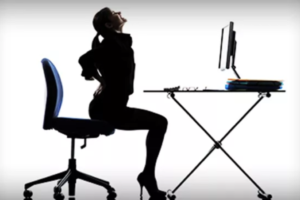
Take into consideration the multi-million dollar business or ergonomics.
Now while I will agree with some of the products out there many have no benefit to the general consumer and simply utilize that term for marketing and advertising to increase sales.
That being said what should we do?
Well following many of the recommendation from up above we need to consider the directional preferences of you pain and which positions feel better and which positions feel worse.
Simply put, try to do more of the good and less of the ouchy bad.
Easier said than done right.
So what might we do?
Use some tools to help you remain in the positions and postures as well as reduce the muscular activity needed to perform them to allow for longer times in those positions.
Then add micro-breaks, if you sit for a job I want you up and our of your chair moving for at a minimum 1-2 minutes every 20-30 minutes!!!
Tools to help:
- Yoga wedge to sit on and roll pelvis in ideal position
- Rolled up towel to sit on and roll pelvis
- Sit at the front of the chair and roll pelvis
- Stability/Yoga Ball
- Sit all the way back in the chair and use a lumbar support
Just as we stated above this allows you to take a commonly painful activity, such as sitting, and reduce the sensitivity that is imposed on the back to allow the feed-forward loop we are trying to initiate to take place. Keep in mind this is more directed towards if you are actively having back pain and sitting flares you up.
Those that might be experiencing back pain from sitting might just need to get up and move. Pain does not equal harm, and the discomfort you are experiencing more likely than not is simply a trigger to get you ass up and moving!
9. You won’t be able to play or pick up your kids or grandkids
As a parent now I can confidently say this one is tough. And I myself have had an episode where my back locked up on me and it was very challenging to help around this house, help with the kids, and really do much of anything.
But I trusted to process and from not being able to walk to the bathroom or put pants on very well, a week later I was deadlifting from the ground again building up my foundation.
Now, this all comes back to building resiliency and expanding our foundational base.
We know that a pyramid height is controlled by the based.
If we are able to expand our foundational support we will not only have a better platform for future progress, we will also find that we do not fall that far when we have a setback.
Whereas we can compare this to an individual that is deconditioned or elderly, when they have a fall or set back it will significantly affect their quality of life as well as their ability to recover.
So we need to build the base!!
Raise the floor! -Craig Leibenson
This is again especially crucial for the populations described in the myth if you want to be ready and able for your children or grandchildren the best thing you can do is become more resilient, expand your foundational movement base, learn new tasks that challenge balance, strength, and readiness.
SCHEDULE NOW IN OFFICE OR FOR A TELEHEALTH SESSION TO DISCUSS YOUR LOW BACK PAIN
10. You will always have to do your back exercises
The exercises that you will be guided on will always be progressive.
Keep in mind a deadlift is a back exercise, so… we might encourage you to do deadlifts for the rest of your life.
Spoiler alert!! Deadlifts do not hurt your back! In fact, they make them stronger and better if done correctly.
So yes, in this case, you might always have to do your back exercises, but at the same time the previous exercises that were given in your acute phase or your building phase will eventually fade out as your progress.
Now I still do mine from time to time to check back in and look for any deficiencies or to brush up on some activation and foundational principles. Again getting good at the basics take you a long way.
What if instead of thinking I always need to do these so that I do not have pain, we rephrase it as I do these back exercises to continue to be strong!
Are we simply doing things to not suck or doing things to be better!
I would rather look forward than dwell on where I have been. Trust the process, do the basics well and allow your foundation to support you!
6 Truths About How To Stop Back Pain
1. Your back is strong
There are a number of different publications that dive deep into the exact amount of load tolerances the spine can withstand. And without going into specific numbers, we can still confidently state that our backs are crazy strong!
Now it must be said that some backs are stronger than others and why this is the case. But if you look to see what some humans are capable of whether it is feats of strength in competition or feats in strength unknowingly to save of life our bodies can do some amazing thing.
We have all seen on the amazing world wide web awesome pictures of individuals in their 80’s lifting crazy amounts of weights, and you think, what the hell? How can they do this? How is this not crippling them?
Strength is inherent in us due to our structural makeup, but it is also something that is developed. So although you might not feel it now, it is 100% possible to achieve it!
But it is more common that we will put a rate-limiting factor on our capabilities due to worry, frustration, or pain. Which I will add is completing natural and common.
Our role as a provider is to highlight a path that allows you to freely determine just how strong you are. The stronger you feel, the more strength you will exhibit, and low and behold, you body will start to adapt and become yet more resilient and robust.
All of a sudden you are in the amazing feed-forward loop of strength and resiliency.
But I understand in reading this if you are in pain you might not feel this way or imagine that this is a possibility, and that is why you need someone in your corner. If not yourself then let it be us!
We will show you the way to a better stronger life!
SCHEDULE NOW IN OFFICE OR FOR A TELEHEALTH SESSION TO DISCUSS YOUR LOW BACK PAIN
2. Movement will help
“Motion is lotion”
“Rest is rust”
There are a number of different phrases that hammer at this point that movement is key!
“If you are not moving then you are losing”
Why is it important?
Well, you see our bodies are very good at being efficient. And when it starts to realize that you are not moving enough, it oddly becomes better at not moving. And if you get better at not moving, well then you are pretty much stuck.
But if you start to move, then your body becomes better at moving, and the more you can move despite having a little bit of pain then your body will start to put the pieces together that:
“I am moving and I am moving with minimal pain”
“Then I must not be as beat up or hurt as I thought originally”
“I should try this other thing that hurt and see how it feels”
The movement investigation provides your body with a frame of reference to a map of the areas that are good to go and not good to go.
Your go no gos! Are simply put on the back burners
But everything else is fair game and now you can start to live your life again knowing and having a better understanding of you pain patterns and movement behaviors around your pain!
This is the most empowering thing for an individual in pain.
The fact that you can control if you are in pain or not based on what movements you do will simply speed up the recovery process and make you more resilient and empowered when it comes to pain management!
3. Sex can still be enjoyable
Due to the dynamic nature of the activity, many individuals struggling with lower back pain often will report the difficulty in connecting with their significant other. At first glance, especially if you have not experienced this type of pain to the level that would create this friction you might not have experienced how frustrating this would be on an individual and their relationship with their significant other.
How do we fix this to keep the spark alive!
Well, if you have made it this far you will gather that we will probably start by determining what movements or positions hurt and what feels better. World leader in spinal biomechanics, Dr. Stuart McGIll, has provided a reference list for individuals to use to better help them navigate what positions might prove to be more beneficial for individuals.
Having this knowledge will be extremely beneficial for you and your partner, as well as helping you continue on the path of recovery with reduces instances of flare-ups or pain bouts.
Understanding back pain can be very complex and what we know about it presents differently for everyone. But what we do know is that the old mentality is not servings us well and a new paradigm shift is happening, where people know they do not want to be reliant on medications and they definitely do not want to have surgery if they can do something about it. We have something you can do about it and trusting the process with a plan will be extremely rewarding to you.
This is not just about getting out of pain this is also about getting back your life. Being able to connect with your significant other has more benefits than nearly everything we have discussed. The relationships between your family and your friends will be strengthened.
Tracking process does not only mean less pain, sometimes it means we can do more with the same amount of discomfort or that it does not make it necessarily worse. So you if can apply this knowledge to do more activities that you enjoy with either the same amount of discomfort (more resiliency) or less discomfort (consistent improvement) then we are on the right path for recovery!
If you feel that your relationships are struggling as a result of the pain you have been experiencing please reach out to us today. We are able to provide you hope and benefit in the office or through telecommunications methods. We will find a way to help!
SCHEDULE NOW IN OFFICE OR FOR A TELEHEALTH SESSION TO DISCUSS YOUR LOW BACK PAIN
4. Let your body heal and it will
“Stop picking at it!”
We have all heard this at some point in our lives. Humans being the curious creatures that we are, seem to always be messing with our pain and picking at it.
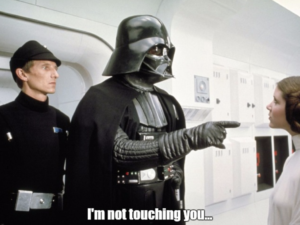
Now that being said, we must understand that letting your body do what it needs to do does not mean sit around and wait.
Consider that much of your pain might be coming from compensation patterns or overly guarded muscles in the absence of tissue damage, especially if you had had pain for some period of time.
More importantly, we are referring to when we have a flare-up or acute pain we must map out the positions that are aggravating our symptoms. These movements, positions, activities, or behaviors are essentially just picking at the scab that is trying to heal itself. If you are able to modify these behaviors and movements temporarily you will allow the process to run its course. You can still move and be active we are just walking around a certain area for a certain period of time. As the sensitivity reduces then we introduce those back in with a systematic process that encourages self-advocacy and confidence!
More confidence = less pain = more movement = more confidence
We switch out of a negative feedback loop into a positive reinforcement loop.
Many of us will naturally do this, but we get stuck in the process of letting things “heal” and we do not progress. We fear to move and fear the slightest bit of pain thinking we are making things worse or not letting it heal.
Keep in mind that pain does not equal harm. Often this is simply and alarm system that triggers us to be cautious with whatever we are doing to prevent us from doing something more.
5. Auditing your lifestyle and what is important will help you understand how to stop back pain
This one might hit some of you a little harder.
Now when I say audit I simply mean taking a step back and gaining a better understanding of where you are, where you want to be, and what you are doing to get there. Sometimes we want certain things but we are not doing the right things to get there, or we are trying to make up and doing too much.
There are various different ways in which this could play out but hopefully, you can get a sense of what we are trying to go after here.
For instance, if you want to be healthy and have strong joints that go move well and not be painful, the Olympic lifts that you are doing in your fitness class might not be the best choice of movements to be performing. So when we say audit it comes down to many different factors.
Now for many of us, this statement is also true when we audit how much we are not moving throughout the day. Sedentarism is slowly rusting us away and aging us faster than our chronological age is. We are living longer and unhealthier.
So we integrate, we know there are things that might not be able to change 180 degrees in your life but if we can integrate some better habits for you back and your body you will start to feel more energized and not drained by your pain, your confidence will go up encouraging you to participate in more activities that you enjoy, and your overall lifestyle improves. Small consistent alterations can have a huge impact.
Breath | Move | Live
Ha, easier said than done right! You do not have to go at this alone ya know! We can help you create achievable, actionable steps so that this process is more streamlined ensuring your success.
6. Deadlifts are good for your back
We will finish with a bang here because for many of you out there you might have been told by a provider that you should ever deadlift lift that it is bad for you back, or you have been scared to perform anything like this because you suffered from a back pain episode following a deadlift movement.
Well, spoiler alert! You deadlifting or hip hinging every day to some capacity whether you are picking something off the ground, leaning forward and balancing, or unloading the dishwasher so this is important.
Now it must be said before we dive into the conversation that spinal flexion is normal and should be encouraged and performed. By preventing spinal flexion with everything that we do we are splinting one of the most important ranges of motion in our bodies that will be challenging to restore. When we encourage hip hinging/deadlifts we put it on a spectrum.
Certain movements will look similar to a hip hinge but have obvious spinal flexion, this might be something like picking up your keys off of the ground or petting the dog, low level of complexity and obvious low loading. On the other end of the spectrum is a heavy barbell deadlift that would require absolute perfect form and technique to reduce spinal flexion especially under load.
Everything else falls in the middle, which means we need to train on the left, to the far right, and in the middle. Creating a movement awareness model in your mind makes you more prepared for anything position, shape, or situation you are thrown into.
With that being said though, we will be encouraging weight hip hinging also known as deadlift! They are actually and arguably the best thing that you can be doing for you back!
Now if they hurt your back you are doing something wrong.
But!
If I can get you to deadlift a weight that is challenging for you or that you have not done before in the past and you can do it well without any pain we could probably argue that your back is ok and it is not broken. In fact, we could argue that your back is strong, and whatever doesn’t break us down will only make us stronger, and if you are stronger you can withstand more without getting hurt, and if you can withstand more without getting hurt you can do more and serve more and be more!
So all in all deadlifts save lives!!
But really this movement is one of the basic human movement patterns and strengthening it will encourage better movement patterns and strength that can be utilized when needed without any fear of getting hurt.
Conclusion
Hopefully, you were able to take away one piece of valuable information that will help you better learn how to stop back pain.
Our role is to help challenge you to create hope for the future and actionable steps for your success.
Invest in yourself and your future today right now. Wasting time only delays what you already know and that is change needs to happen. Take the first step to owning up to the pain and changing your future today!
There are many elements to back pain and in no way are we saying that it is as simple as we have laid out above for everyone. But I hope you have a little more confidence that what you are experiencing can be normal, and that there is a way to find comfort and conquer the pain that you are experiencing.
This article is intended to give you insight into the many elements of back pain while demonstrating the faults or myths around back pain and some encouraging points directed towards getting over back pain. If you have additional questions you can always reach me at 303-717-6323. We do not want anyone to be suffering and if there is anything that we can do to help or any value in which we can provide, we will do it!
So please reach out and let us help you get over this!!



